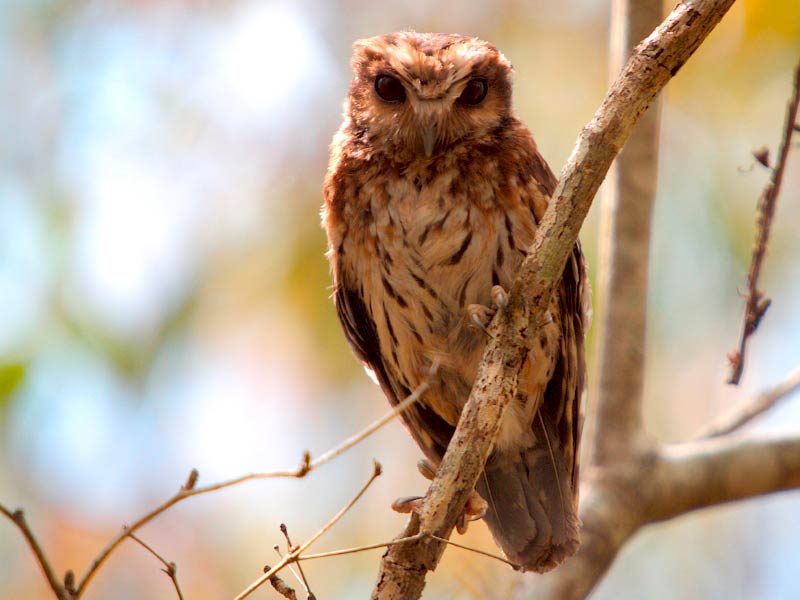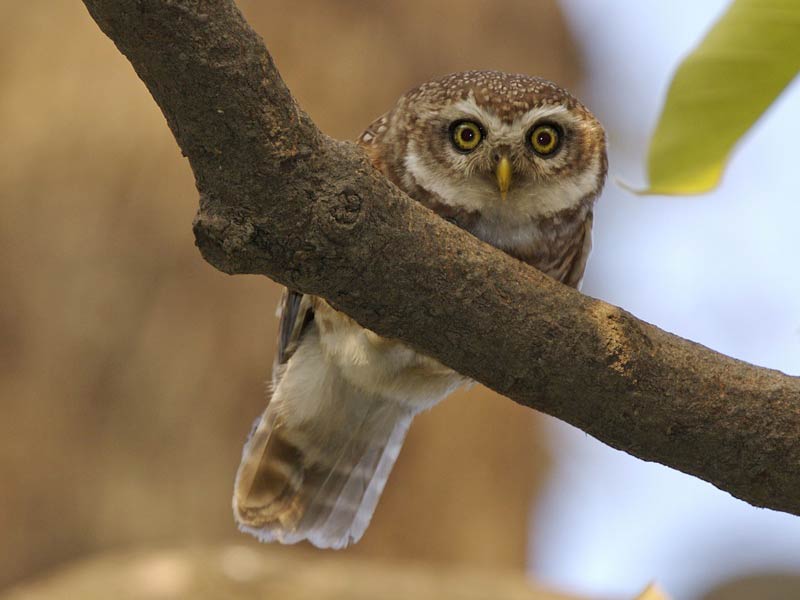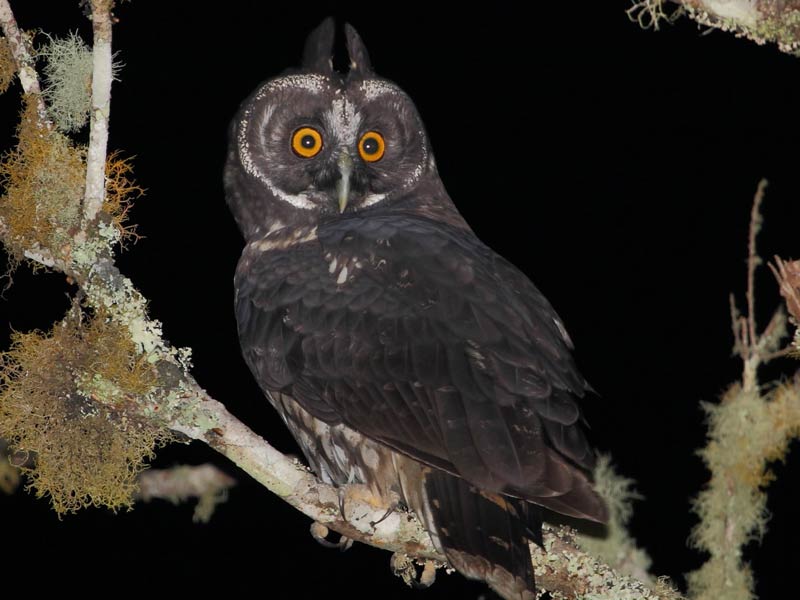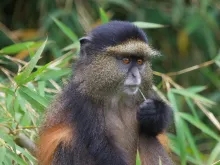In many cultures, owls have long been associated with death, bad luck, and supernatural forces, which helps explain why they’re often associated with Halloween. But despite their sometimes sinister reputation, they provide natural pest control and are an important indicator species, alerting biologists to the overall health of the surrounding ecosystem.
Owls are found on every continent except Antarctica, and the approximately 200 species range in size from just 5 inches in length to more than 30 inches, and with wingspans reaching over 6 feet. Read on to learn about five owl species from around the world.
 Photo by Ernesto Reyes
Photo by Ernesto Reyes
Name: Bare-legged Owl or Cuban Screech Owl (Margarobyas lawrencii)
Where to find it: Endemic to Cuba
This little owl – only about 8 inches in length – frequently nests in abandoned woodpecker holes. It is unusual among owls due to the lack of feathers on its upper feet, a feature which gives the bird its name.
 Photo by Fcb981
Photo by Fcb981
Name: Snowy Owl (Bubo scandiacus)
Where to find it: Arctic regions in North America and Eurasia, including Alaska and sometimes Iceland
Easily identifiable for its white plumage, Harry Potter fans will also recognize the Snowy Owl as Hedwig, Harry's companion.
 Photo by Derek Keats
Photo by Derek Keats
Name: Verreaux’s Eagle-Owl (Bubo lacteus)
Where to find it: Wooded savannas of sub-Saharan Africa.
Don’t let the name fool you…this large bird is all owl. The largest owl found in Africa, it's distinguished by its pink eyelids, a feature no other owl has.
 Photo by Lip Kee Yap
Photo by Lip Kee Yap
Name: Spotted Owlet (Athene brama)
Where to find it: Tropical Asia, from mainland India to Southeast Asia
Though they live in open country, these owls have also adapted to living in and near urban settings. Their diet varies according to their habitat and can include insects, rodents, small birds, bats, toads, lizards, snakes, scorpions, and molluscs.
 Photo by Hector Bottai
Photo by Hector Bottai
Name: Stygian Owl (Asio stygius)
Where to find it: Open woodlands in the tropics of the Americas
The term “stygian” is derived from the River Styx, a fitting name for this mysterious avian about which not much is known.












